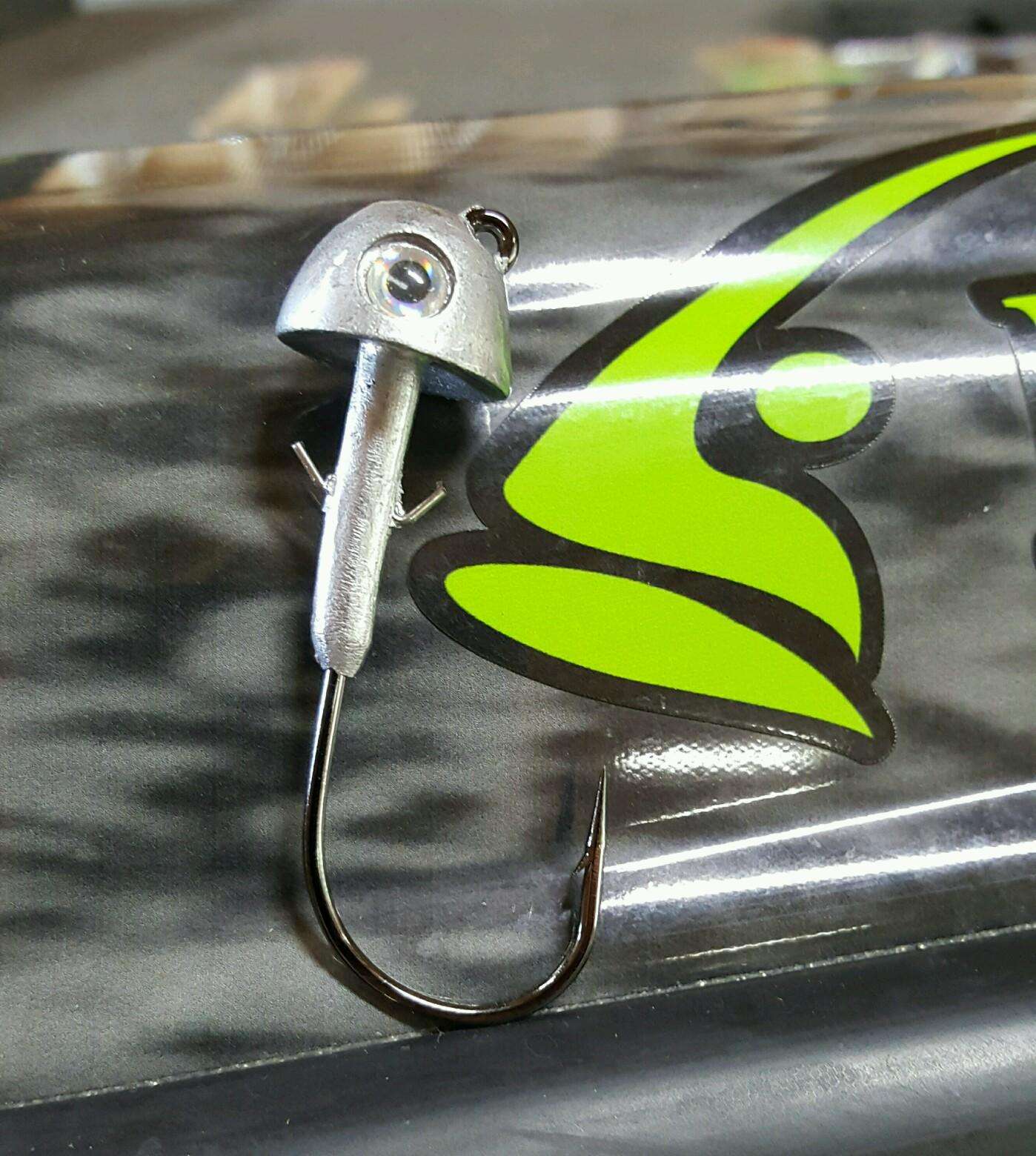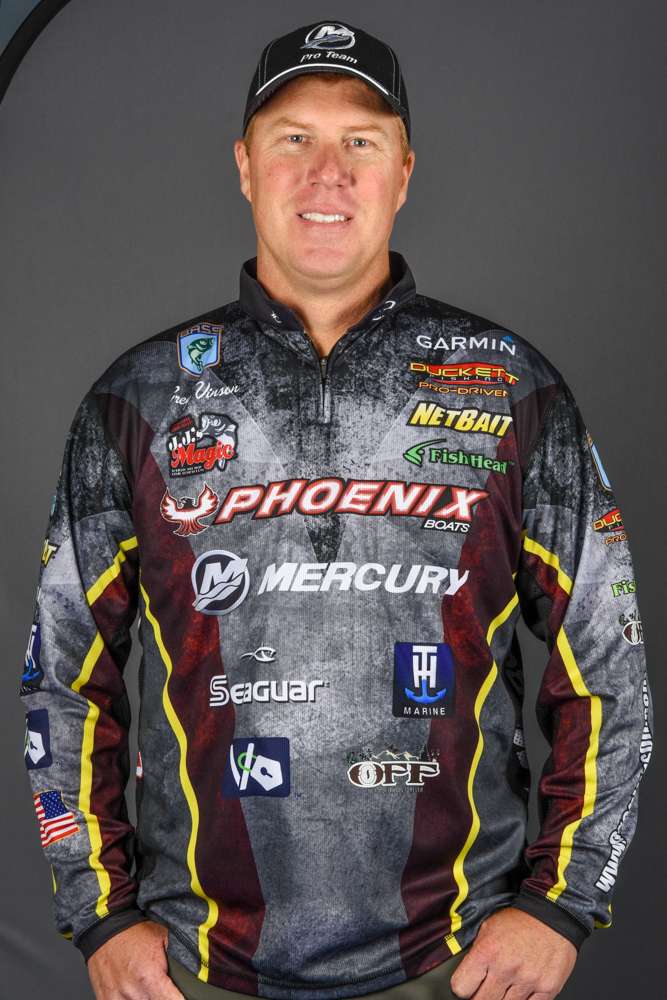
There’s been a lot of stuff posted up on the site about postspawn bass but not so much about my favorite lure for this time of the year — a plastic swimbait.
In my experience most of the fish are eating shad as they move from shallow water out towards the deep. Some of them are holding on ambush points but a lot of them are roving around looking for the little critters. A swimbait is the perfect lure for this scenario.
Setting up for swimbait fishing is key. Use the right head, the right swimbait body and the right tackle and you’ll be well on your way to success. Let’s start with the head.
One of the problems with most swimbait heads is that they don’t hold the plastic in place. The body tends to slip away from the head or roll off center when you’re casting and retrieving them. Once that happens your bait is useless. The problem is even worse with hollow body baits because there’s only a little piece of meat at the front of the head.
I used to glue the body to the head. That worked but it had the disadvantage of being slow and inefficient. With the help of Fish Head lures I designed a keeper that actually works. It’s made with two prongs that hold the body tight against the head. They keep the bait in place and won’t let it roll off to the side.
We also put some of the lead on the shank of the hook. That lessens the overall profile of the head and helps balance the bait so that it tracks through the water horizontally like a real baitfish.
To be fair Fish Head isn’t the only one out there making that kind of head and keeper. VMC has one and so do several other manufacturers. No matter which head you use you’ll be happier with its performance if it has the features I’ve mentioned.
Swimbait bodies come in three basic designs — hollow body, solid body and a hybrid model that incorporates some of both designs. Hollow body baits have the advantage of being light and they tend to have a realistic swimming action. There are dozens of really good ones around. Probably the best known manufacturer of hollow body swimbaits is Bassrix.
Solid body models are tougher but not so light in the water. Their swimming action is a little harder. You might say they’re more aggressive. I’d hate to think about how many companies make them, and most of them are good. Some of the best are made by Keitech.
NetBait’s BK Swimbait is an example of a hybrid design. It has a longer, solid head that helps hold everything in place, but the midsection and the tail are hollow so you get the light, natural swimming action of a hollow body. It also has a thin membrane that runs the first three-fourths of the body that makes it more durable.
When to use one design over another is more art than science. Go with your gut and experiment, and don’t worry over colors. Go with something that looks like the local shad.
Make sure you try different head weights, though. Use the weight that’ll let you keep your lure at the right depth and speed. Think about weight in terms of speed, not depth. A heavy head can be retrieved fast and deep. A lighter head must be retrieved slower to hold that same depth.
I fish my swimbaits on a Duckett Fishing Micro Magic rod and a Duckett Fishing 360 reel. The rod is 7 foot, 6 inches long with a medium-heavy action and a fast tip. The long rod allows you to maximize casting distance and helps you take up slack in your line.
My reel is the high speed (7.1:1 gear ratio) model. I spool it with Seaguar InvizX Fluorocarbon line — never less than 10-pound test and never more than 17. The high gear ratio is critical. Many of your strikes will come from behind the bait with the fish coming straight at you. You need to be able to take up slack line in a hurry.
Once you’re set up correctly it’s easy to fish one of these lures. All you need to do is cast them out and reel them back in. Concentrate your efforts in the area between the spawning flats and the deep, main lake summer holding places. That’s where you’ll find most of the quality bass until summer gets here.
Now, go fishing! Nobody ever caught a bass with a dry lure.

